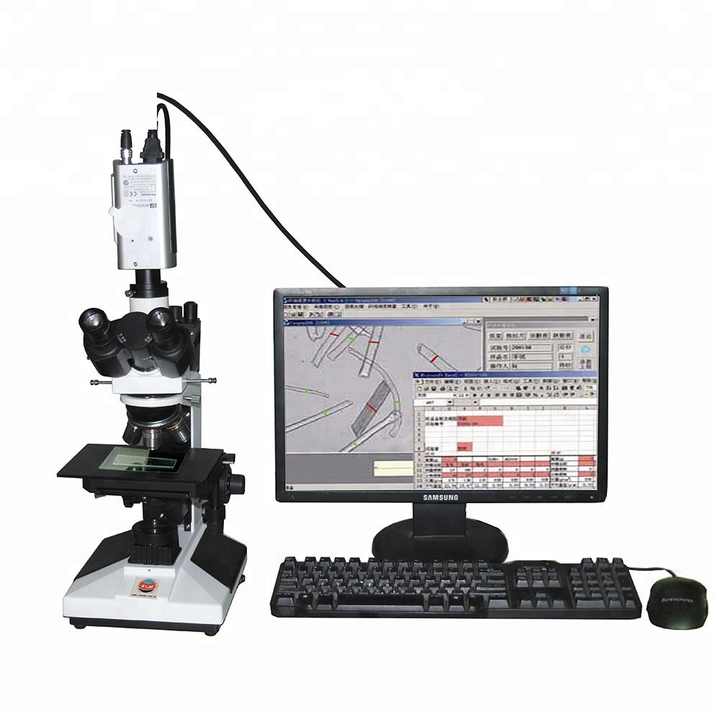How an Optical Fibre Diameter Analyser Enhances Manufacturing Accuracy
How an Optical Fibre Diameter Analyser Enhances Manufacturing Accuracy
Blog Article
Enhance Your Fibre Optic Projects With an Effective Diameter Analyser
The integration of an efficient size analyser right into fiber optic tasks functions as a critical element in attaining precision and uniformity. By helping with precise diameter dimensions, these analysers not only boost the high quality of installments yet additionally reduce prospective compatibility problems among components. The sophisticated capabilities of modern-day analysers simplify data collection and quality control processes. As we discover the important attributes and advantages of these tools, it becomes evident just how they can change task outcomes and ensure adherence to market criteria. What remains to be reviewed is exactly how to properly apply these analysers in your existing process.
Relevance of Size Measurement
Determining the diameter of fibre optic cords is an essential task that makes sure optimum efficiency and reliability in communication systems. Exact diameter measurement is vital for different reasons, primarily for preserving signal honesty and lessening loss. A wire's size straight affects its capability to transmit light efficiently; discrepancies from the specified size can cause increased depletion, which influences the total efficiency of the network.
In addition, accurate measurement is essential during the installment and upkeep of fiber optic systems. An improper fit between adapters and cable televisions can cause signal degradation or total failure of interaction web links. By making sure that diameters are within specified tolerances, service technicians can enhance compatibility in between components, leading to enhanced system integrity.
In enhancement, size dimension plays a considerable role in quality assurance throughout manufacturing. Consistency in the size of fibre optic wires is vital for guaranteeing uniform efficiency across various batches. optical fibre diameter analyser. This consistency aids manufacturers maintain industry standards and promotes self-confidence amongst end-users
Functions of an Efficient Analyser
An efficient analyser for fiber optic projects should incorporate a number of essential attributes that boost precision and usability in size dimension. High-resolution optical sensing units are essential for specific size analyses, making it possible for users to detect also the smallest variations in fiber density. These sensors need to be enhanced by sophisticated calibration systems, making certain regular performance across different problems and products.
Secondly, an easy to use user interface is essential for helping with convenience of operation. This consists of intuitive software program that permits seamless information input and result, in addition to graphes of the measurements taken. A mobile layout boosts use in various area environments, making it less complicated to carry out assessments on-site.
In addition, the analyser needs to sustain multiple dimension settings, fitting different fibre types and applications. The capability to store and get historic information is an additional important feature, allowing users to track performance gradually and make informed decisions.
Advantages for Fibre Optic Projects
Executing a diameter analyser in fiber optic projects offers substantial benefits that dramatically enhance task effectiveness and high quality. One of the primary advantages is the capacity to ensure exact dimensions of fiber size, which is important for maintaining ideal efficiency in fiber optic systems. Precise size readings aid in the recognition of incongruities that could result in signal degradation or loss, therefore ensuring high-grade transmission.
Furthermore, making use find out of a diameter analyser enhances the top quality control procedure. By automating measurement jobs, task teams can lower the moment spent on hands-on inspections, leading to faster project conclusion and decreased labour expenses. This efficiency also permits even more rigorous screening methods, leading to boosted product integrity.
Furthermore, consistency in fibre size measurements advertises compatibility with other fibre optic components, decreasing the risk of setup mistakes and improving general system performance. The consolidation of a diameter analyser not only aids in preserving sector criteria but likewise promotes confidence in job deliverables.
Integration Into Existing Process
Incorporating a size analyser right into existing process can significantly improve the operational performance of fibre optic tasks. By flawlessly including this innovation, groups can achieve specific measurements that are crucial discover here to maintaining the stability and efficiency of fibre optic systems. This integration permits real-time information collection and evaluation, which can be vital throughout the production and installation phases.
Moreover, the capability to automate diameter dimension processes decreases the potential for human error, guaranteeing consistent quality control throughout the job lifecycle. The information created can be quickly shared across systems, helping with collaboration among engineers, technicians, and task managers. This availability improves decision-making and increases job timelines.

Choosing the Right Size Analyser
When selecting a diameter analyser for fibre optic projects, it is necessary to think about several key variables that straight impact measurement accuracy and operational efficiency. Initially, the resolution and precision of the analyser must line up with the certain requirements of your project. Higher resolution instruments can find minute variants in size, which is essential for making certain optimal efficiency in fiber optic systems.
Next, assess the speed of dimension. For jobs with tight deadlines, a size analyser that supplies fast information procurement can substantially boost productivity. Additionally, consider the analyser's compatibility with existing systems and software program. A seamless integration lowers arrangement time and decreases interruptions throughout procedures.
One more essential aspect is the variety of sizes the analyser can fit. By meticulously reviewing these elements, you can choose a diameter analyser that enhances the efficiency and accuracy of your fiber optic projects.
Verdict
In final thought, the integration of an efficient diameter analyser is vital for enhancing fiber optic projects. Precise size measurements ensure optimum performance and integrity while lessening installation errors (optical fibre diameter analyser).
A wire's diameter directly affects its capability to transfer light effectively; discrepancies from the defined diameter can lead to enhanced depletion, which impacts the general performance of the network.

Report this page